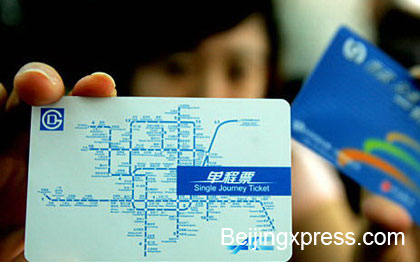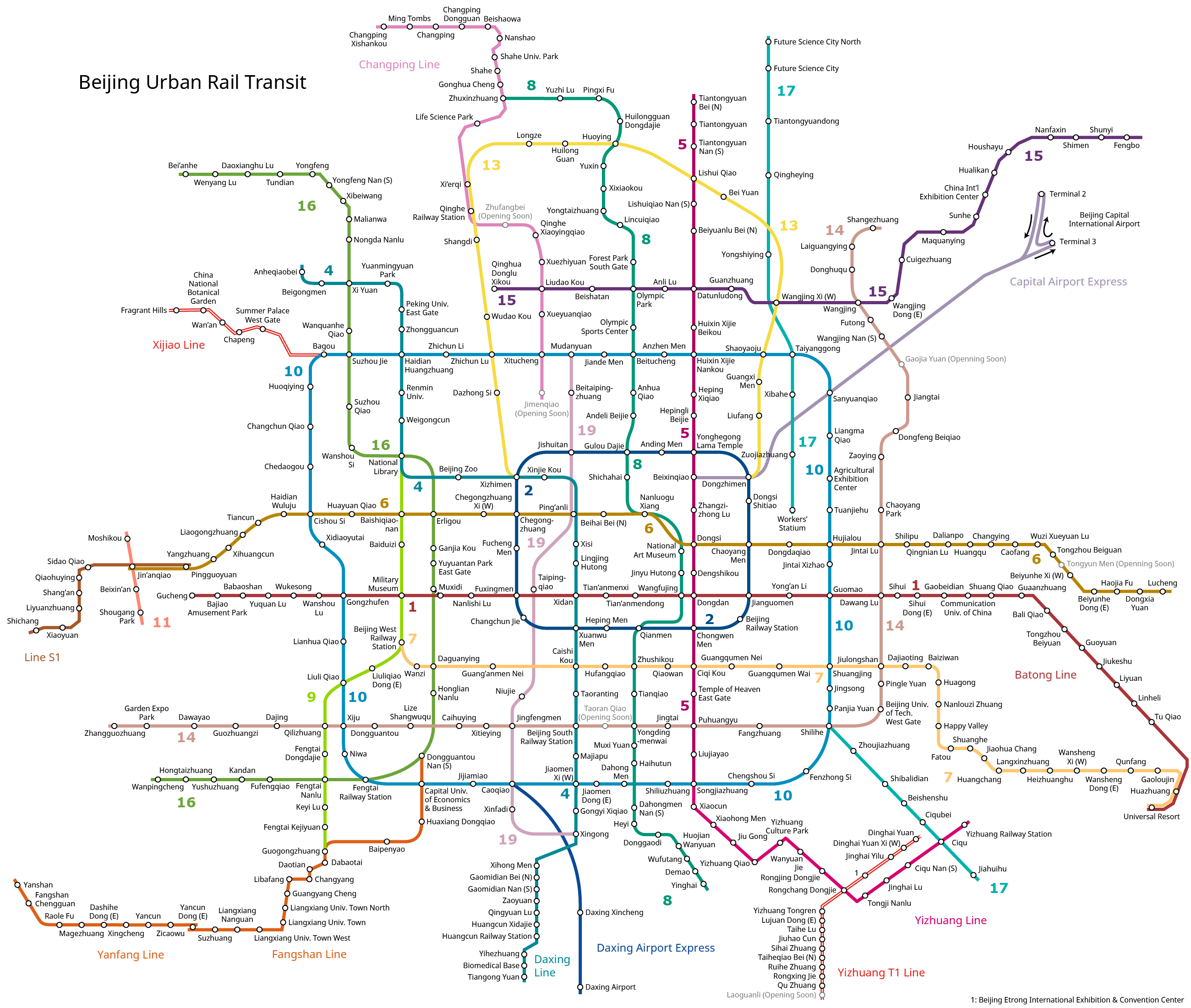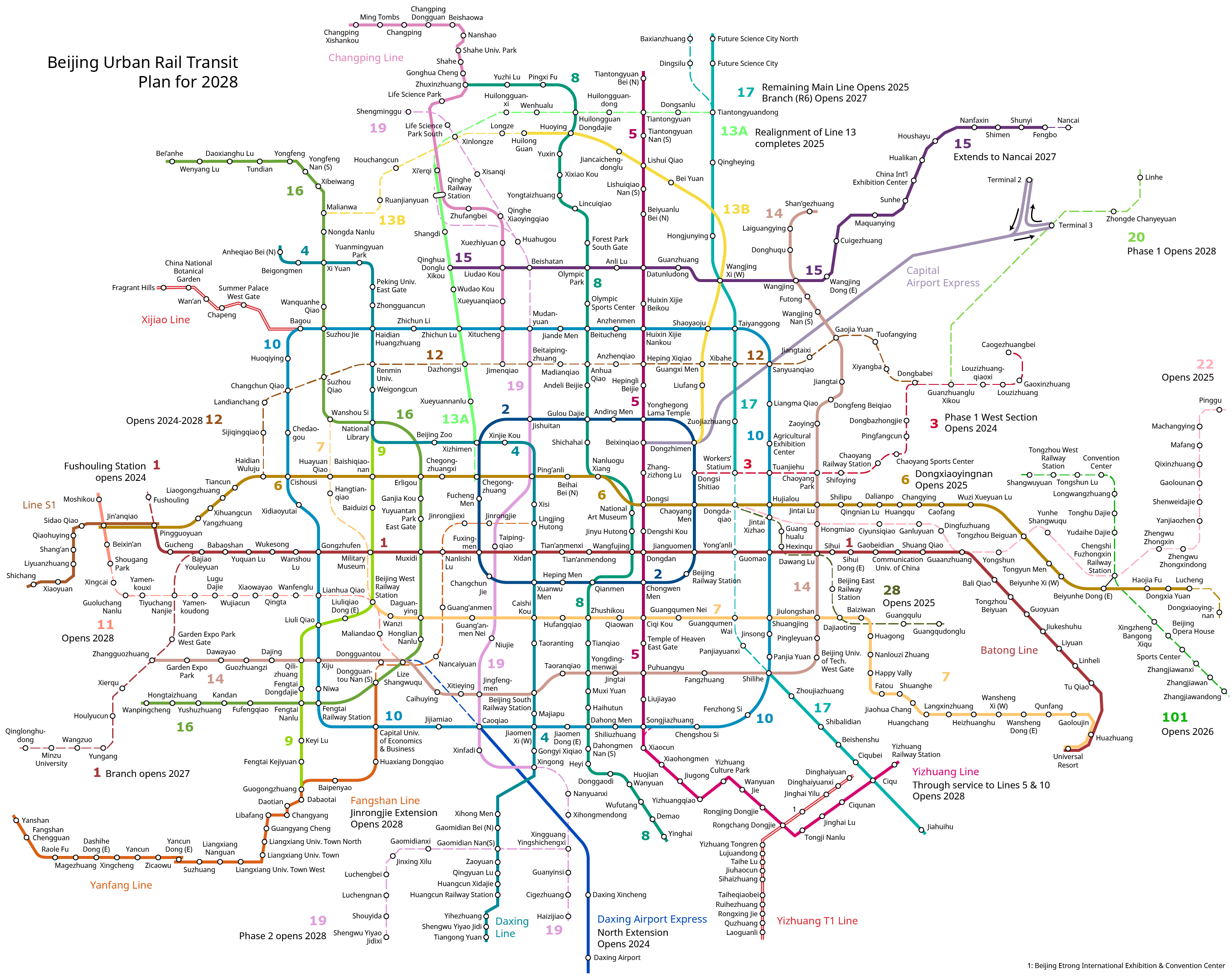 The subway is owned by the city of Beijing and has two operators, the wholly state-owned Beijing Mass Transit Railway Operation Corp., which operates 13 lines, and the Beijing MTR Corp., a public-private joint venture with the Hong Kong MTR, which manages the other two lines.
The subway is owned by the city of Beijing and has two operators, the wholly state-owned Beijing Mass Transit Railway Operation Corp., which operates 13 lines, and the Beijing MTR Corp., a public-private joint venture with the Hong Kong MTR, which manages the other two lines.
The Beijing Subway's first line opened in 1969, and the metro network has now grown to 16 lines, 221 stations and 442 km (275 mi) of track in operation, making it the second longest subway system in the world. The Beijing Subway delivered over 2.18 billion rides in 2011 and on Januanry 12, 2013 set a single-day ridership record of 8.69 million, ranking fourth in annual ridership after those of Tokyo, Seoul, and Moscow.
The existing network still cannot adequately meet the city's mass transit needs and extensive expansion plans call for 19 lines and over 708 km (440 mi) of track in operation by 2015 and 1,050 km (650 mi) of track by 2020.
The Beijing municipal government spends approximately ¥10 billion annually on subway construction and another ¥2 billion to subsidize operations. By 2015, Beijing Subway's annual operating losses are expected to grow to ¥4.3 billion (¥17 billion if depreciation and other accounting costs are included).
Beijing Subway Fares
 A flat fare of RMB(¥) 2.00 with unlimited transfers applies to all lines except the Airport Express, which costs ¥25. Children below 1.2 metres (47 in) in height ride for free when accompanied by a paying adult.
A flat fare of RMB(¥) 2.00 with unlimited transfers applies to all lines except the Airport Express, which costs ¥25. Children below 1.2 metres (47 in) in height ride for free when accompanied by a paying adult.
All Beijing Subway lines collect fares through automatic fare collection (AFC) machines that accept single-ride tickets and the One Card Through Card (Yikatong in Pinyin), an integrated circuit card (ICC card) that can store credit for multiple rides. Riders can purchase tickets and add credit to Yikatong at ticket counters and vending machines in every station. Yikatong is also accepted on nearly all urban and suburban buses, and can be used as e-money for other purchases. The use of tickets hand checked by clerks was phased out, ending on June 9, 2008.
| Line | Opened | Length km | Stations (surface) |
|---|---|---|---|
| Beijing Subway Line 1 | 1969 | 30.4 | 23 (2) |
| Beijing Subway Line 2 | 1971 | 23.1 | 18 |
| Beijing Subway Line 4 | 2009 | 28.2 | 24 (1) |
| Beijing Subway Line 5 | 2007 | 27.6 | 23 (7) |
| Beijing Subway Line 6 | 2012 | 30.4 | 20 |
| Beijing Subway Line 7 | 2014 | 23.7 | 30 |
| Beijing Subway Line 8 | 2008 | 22.0 | 12 |
| Beijing Subway Line 9 | 2011 | 16.5 | 12 |
| Beijing Subway Line 10 | 2008 | 54.8 | 42 |
| Beijing Subway Line 13 | 2002 | 40.9 | 16 (15) |
| Beijing Subway Line 14 | 2013 | 43.8 | 30 |
| Beijing Subway Line 15 | 2010 | 30.2 | 12 (4) |
| Beijing Subway Line 16 | 2016 | 19.6 | 10 |
| Beijing Subway Line S1 | 2017 | 10.2 | 8 |
| Beijing Airport Express | 2008 | 28.1 | 4 (1) |
| Beijing Batong Line | 2003 | 18.9 | 13 (13) |
| Beijing Changping Line | 2010 | 21.24 | 7 (6) |
| Beijing Daxing Line | 2010 | 21.7 | 12 (1) |
| Beijing Fangshan Line | 2010 | 24.79 | 11 (9) |
| Beijing Subway Xijiao Line | 2017 | 9.4 | 6 |
| Beijing Yizhuang Line | 2010 | 23.3 | 13 (8) |
Beijing Subway Map

